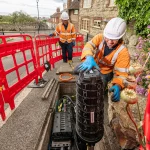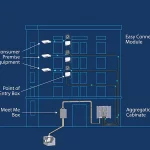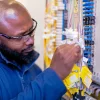FTTH ISP Community Fibre Adopts ADTRAN’s 10Gbps XGS-PON Tech
London focused UK fibre optic ISP Community Fibre (CF) has announced that they’ve started to roll-out ADTRAN’s new symmetrical 10Gbps broadband capable XGS-PON technology to homes and businesses. The first to benefit will be those at the Steel Yard, a music venue in the city centre.
Last month the provider’s CEO, Jeremy Chelot, informed ISPreview.co.uk (here) that he aspired to extend their Fibre-to-the-Home (FTTH) network to cover more than 1 million UK premises with 10Gbps capable broadband by 2025. As part of that he also revealed that their residential packages are currently based on GPON, whereas the business packages operate on XGS-PON (ITU-T G.9807.1) or Point-to-Point fibre technology.
The good news is that CF has now done a deal to adopt ADTRAN’s Symmetric Passive Optical Network (XGS-PON) solution for both homes and businesses, although they’re not the first to do this. Back in June 2018 Call Flow Solutions sibling ISP brand – Trooli – became the first in the UK to make commercial use of ADTRAN’s new equipment (here).
Advertisement
Jeremy Chelot, Community Fibre CEO, said:
“We are seeing tremendous interest for Gigabit and above service offerings, and expect that having the first commercially available 10G service in London will make any building on our network more attractive to bandwidth-hungry tenants looking for a new space to call home.
A 10G service means that our customers have the bandwidth needed to be as connected, entertained and immersed as they could possibly want, and still provide room for emerging automation-based and 5G services that we expect to hit the market in the coming years.”
Ronan Kelly, ADTRAN CTO for EMEA and APAC, said:
“Community Fibre is focused on one of the most highly desirable and underserved demographics in the UK and is committed to meet and exceed a level of customer service that is unmatched in the market. Community Fibre has access to our wealth of network, market, planning and technology experience as they plan to aggressively roll out services throughout the UK’s urban markets.”
We should point out that at present CF has little need to offer residential consumers faster speeds than 1Gbps (most people still can’t make use of all that performance, let alone the dizzy heights of 10Gbps), although by upgrading their equipment they’ll be ready to adapt in future years, if required.
Mark is a professional technology writer, IT consultant and computer engineer from Dorset (England), he also founded ISPreview in 1999 and enjoys analysing the latest telecoms and broadband developments. Find me on X (Twitter), Mastodon, Facebook, BlueSky, Threads.net and Linkedin.
« ITSWisp Wireless Broadband Mast Causes Anger in South Norfolk UK

















































Comments are closed